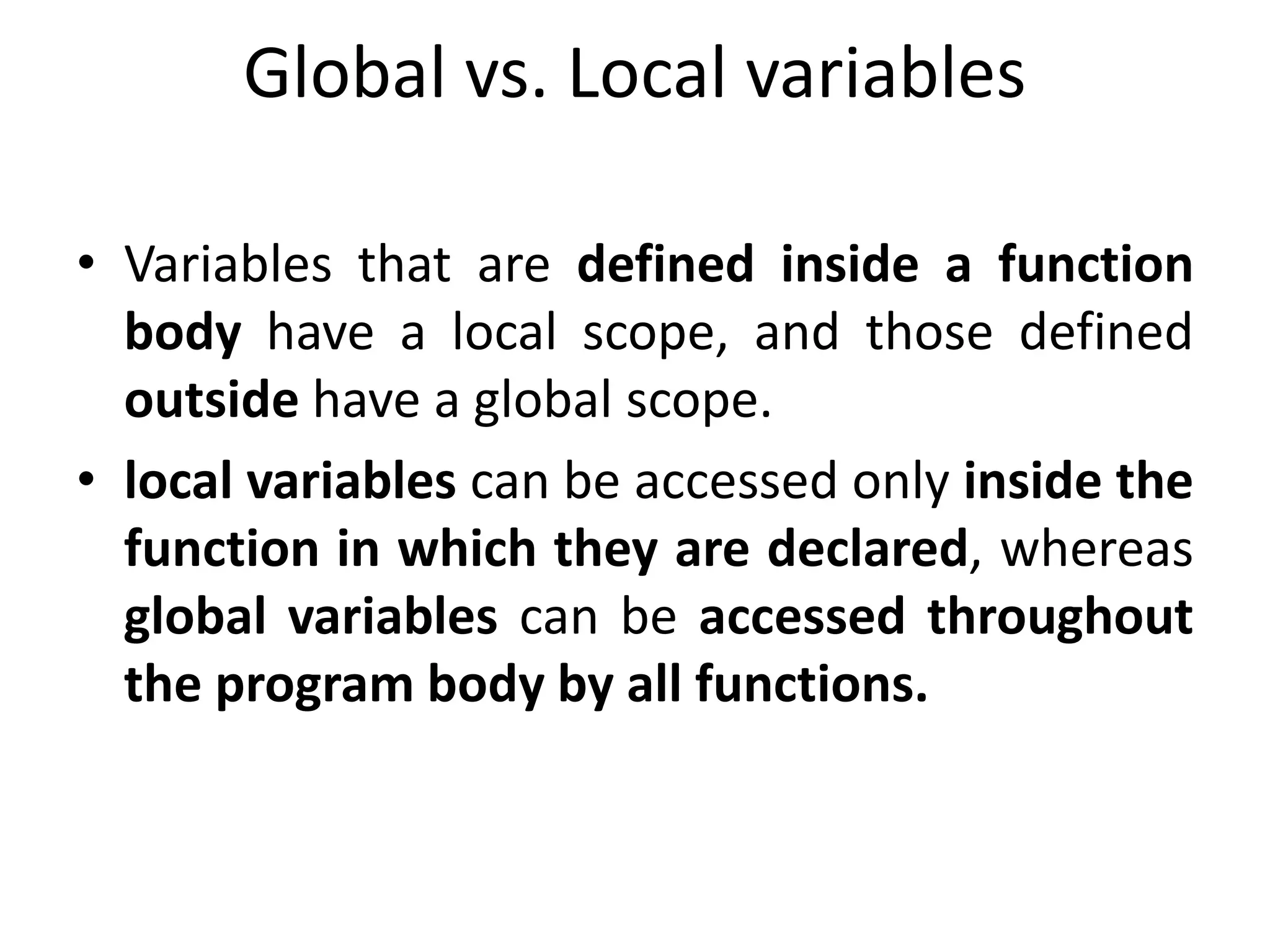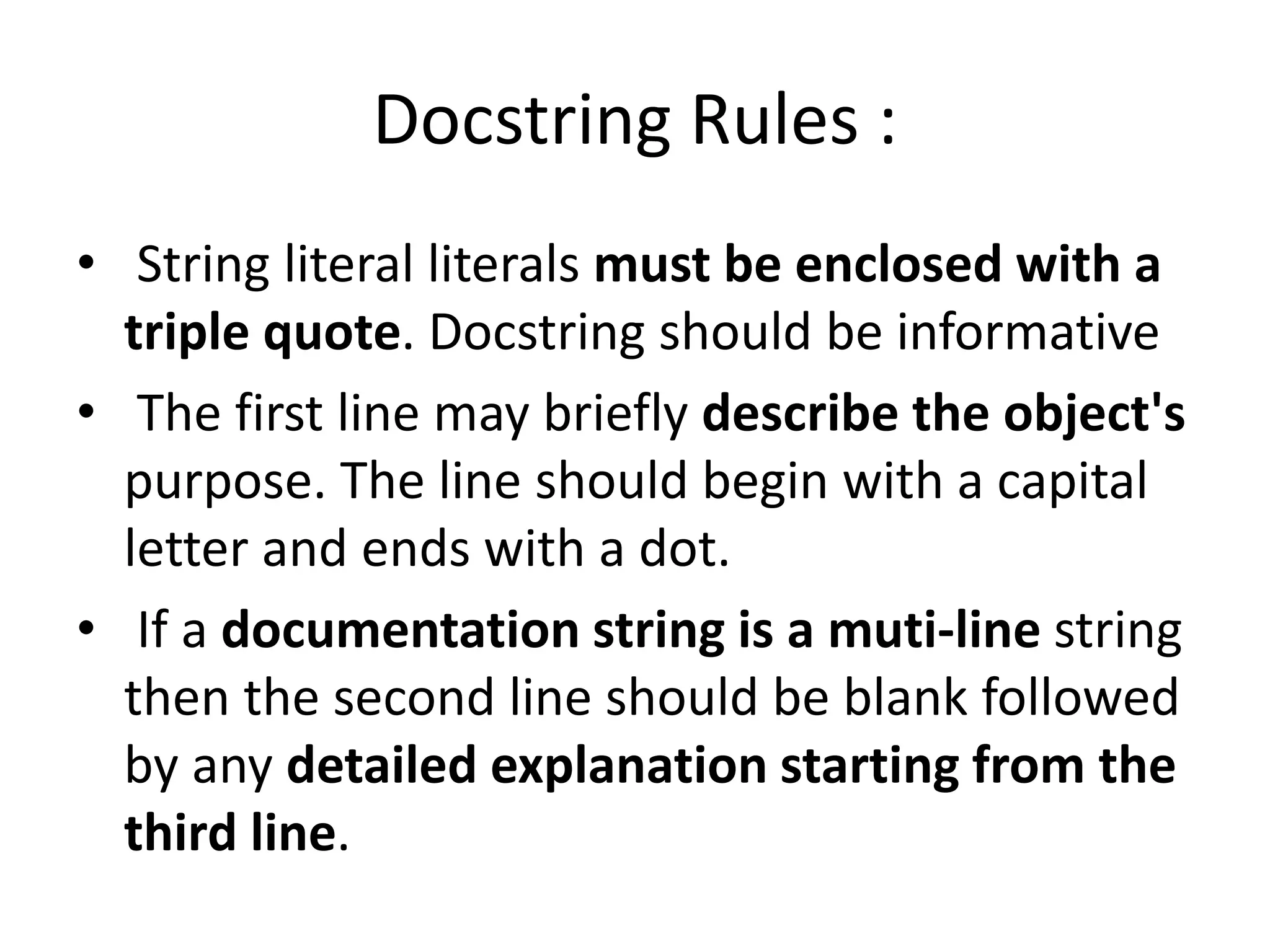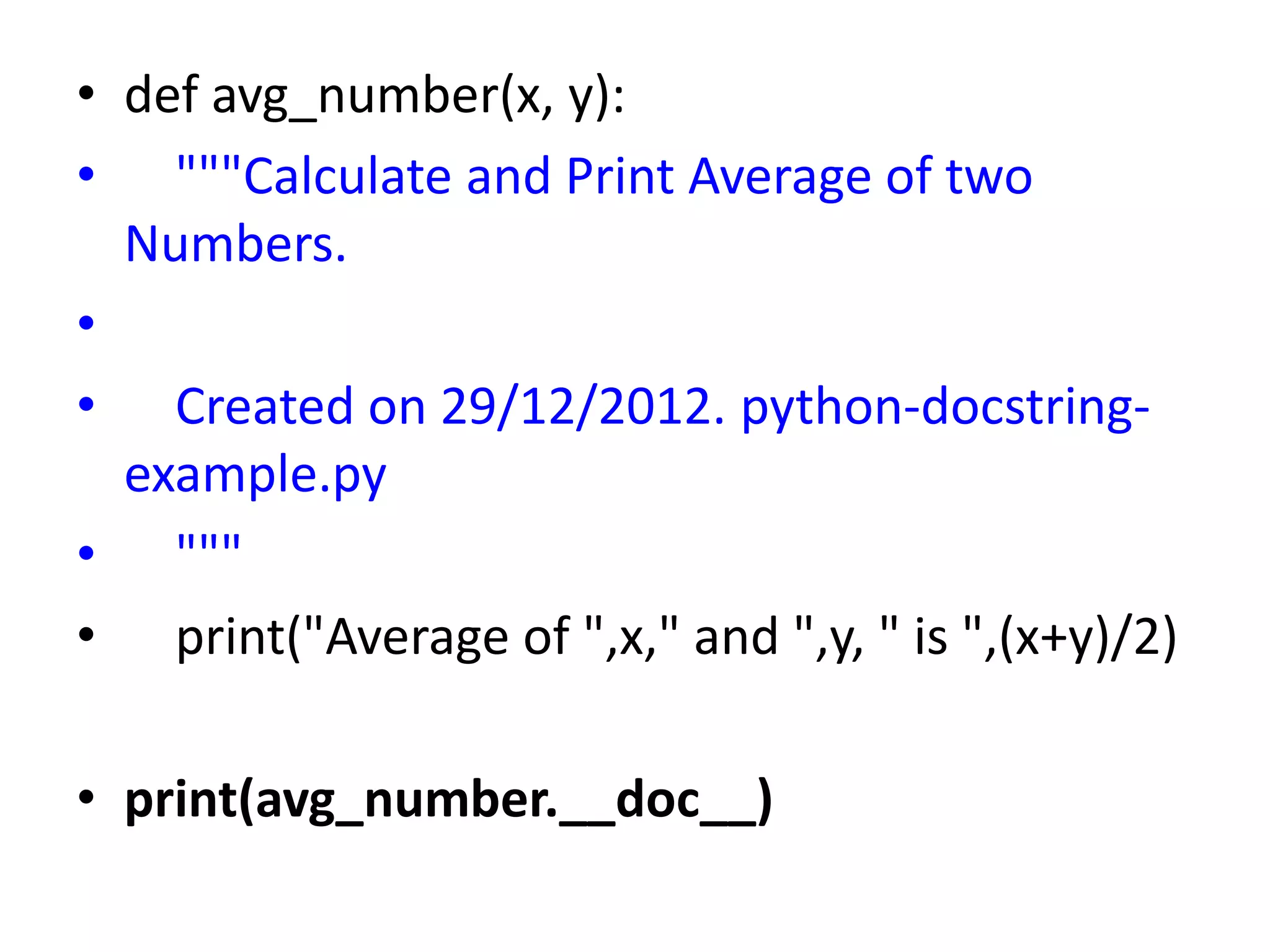The document discusses exception handling in Python, explaining the differences between syntax errors and exceptions, along with how to use try, except, else, and finally blocks. It also covers raising exceptions, creating custom exceptions, and the usage of functions, including defining, calling, and passing parameters to them. Additionally, it touches on variable scope, lambda functions, and Python documentation strings (docstrings).

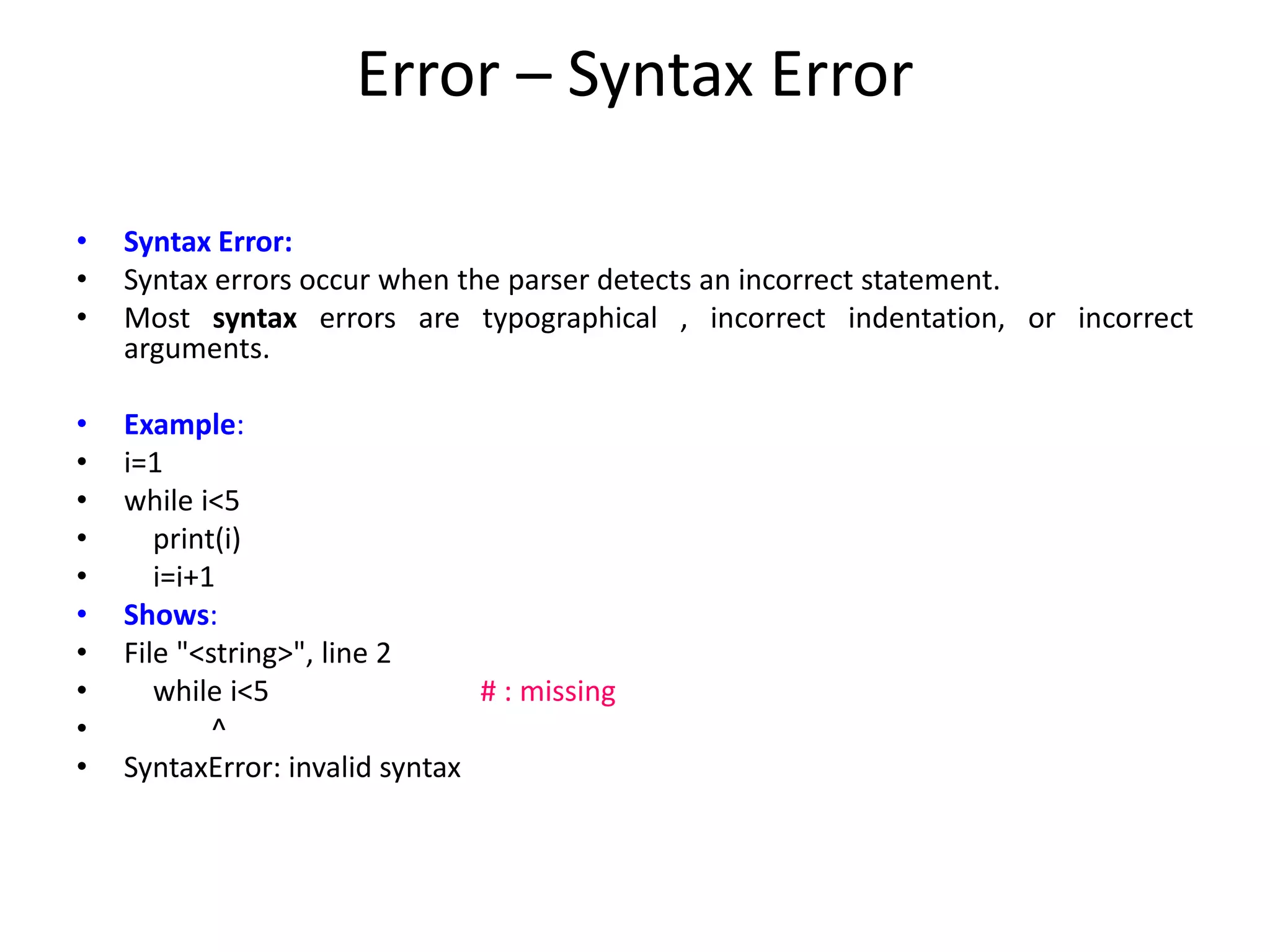

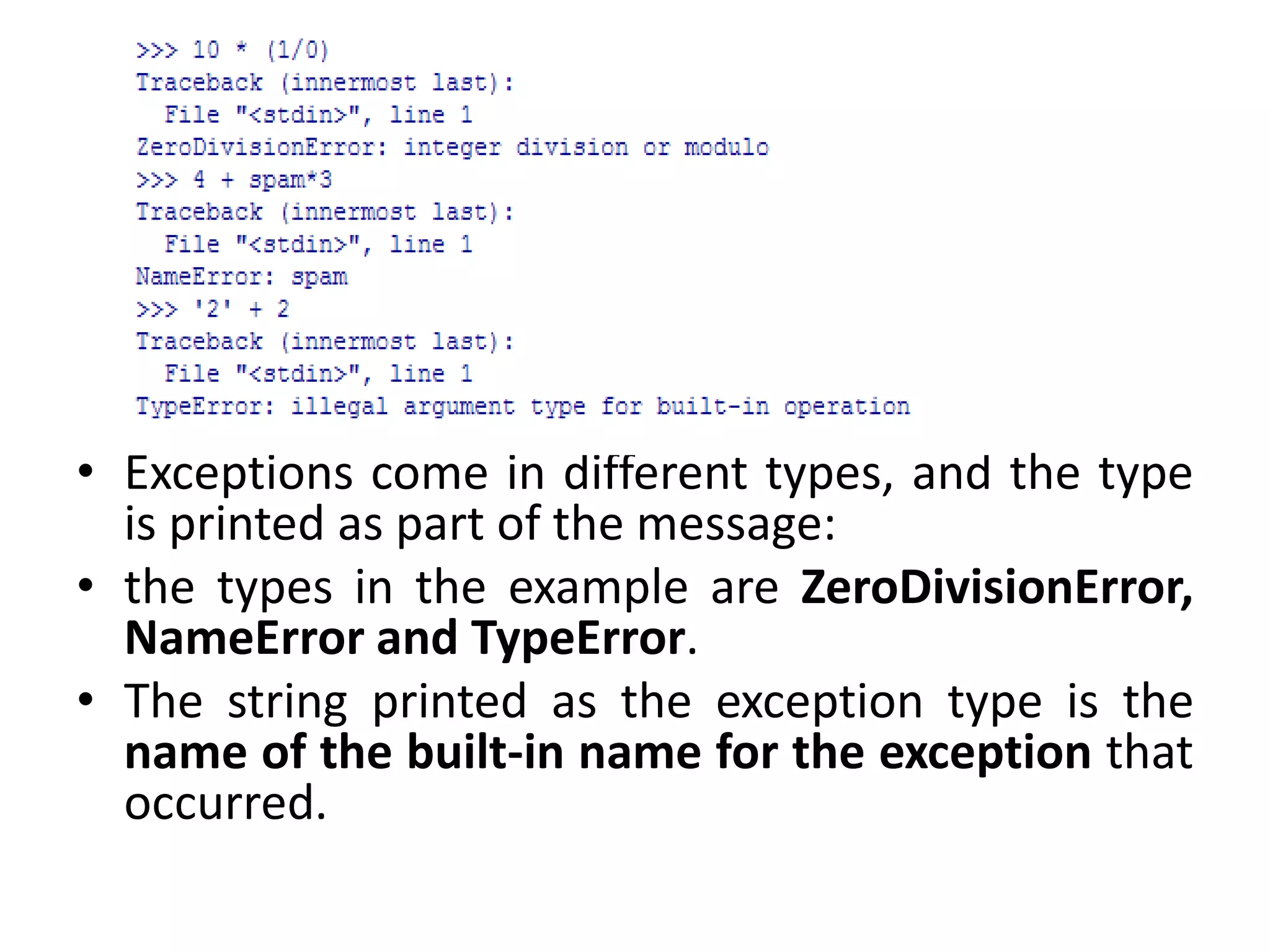
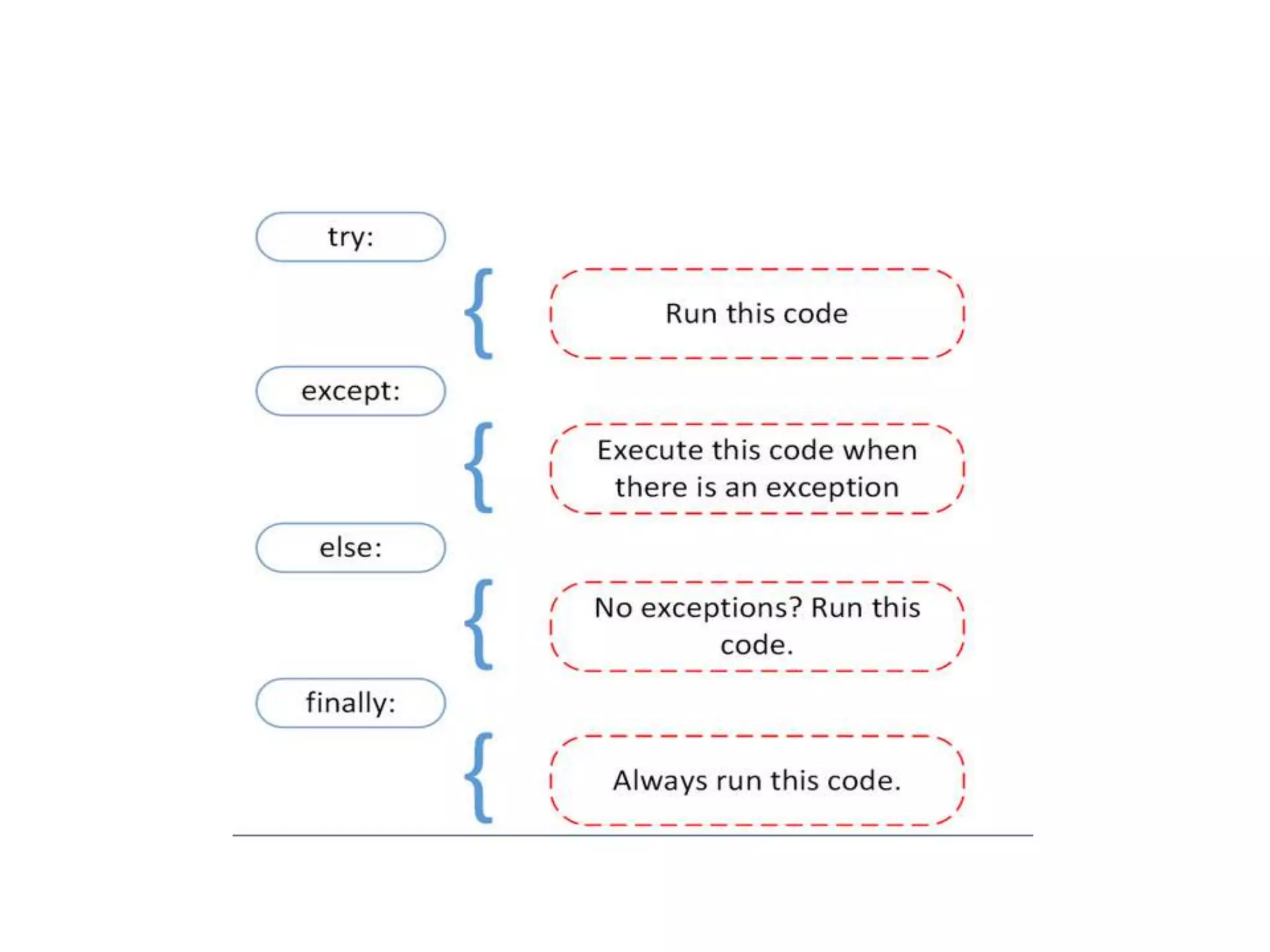
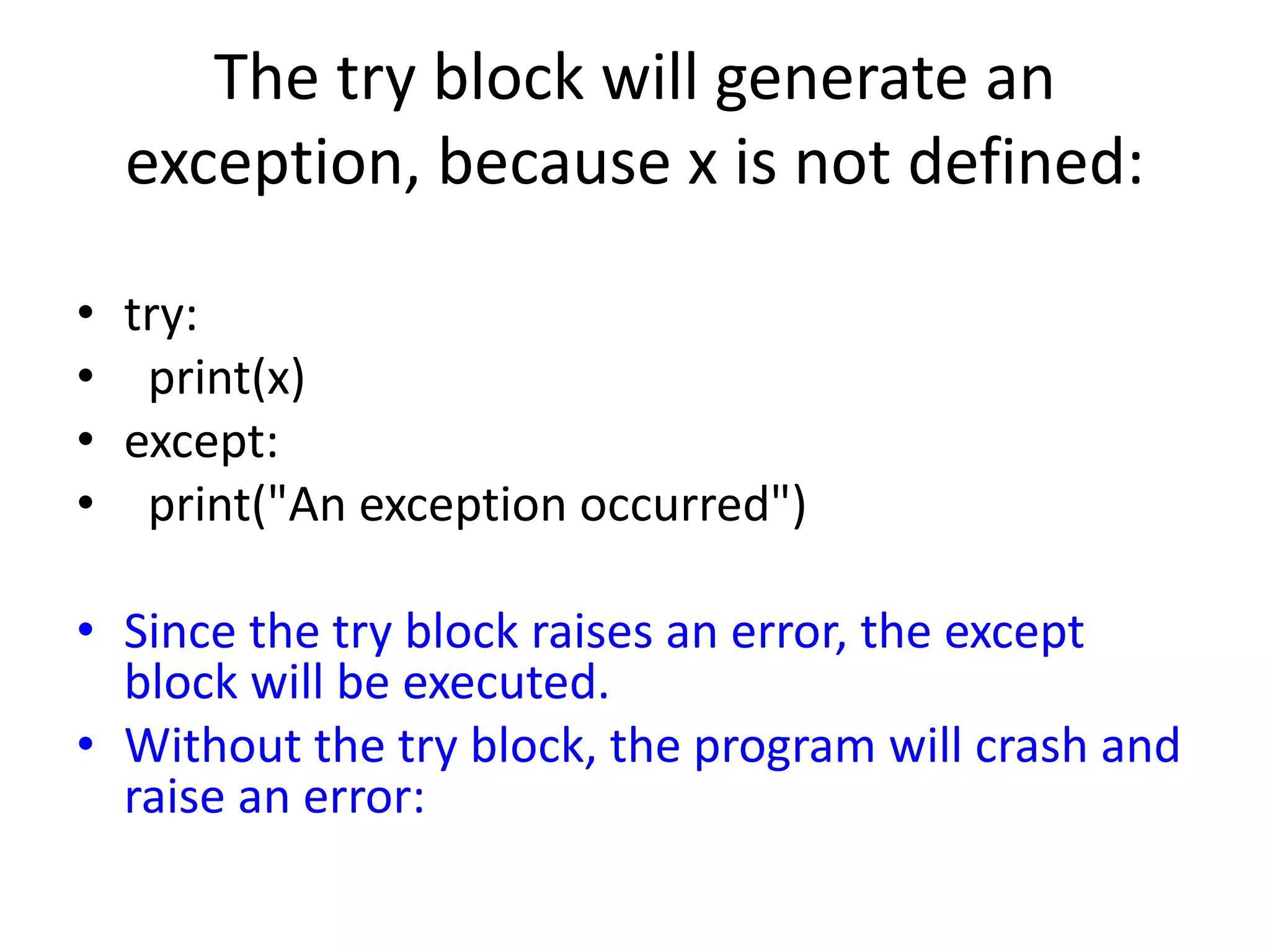
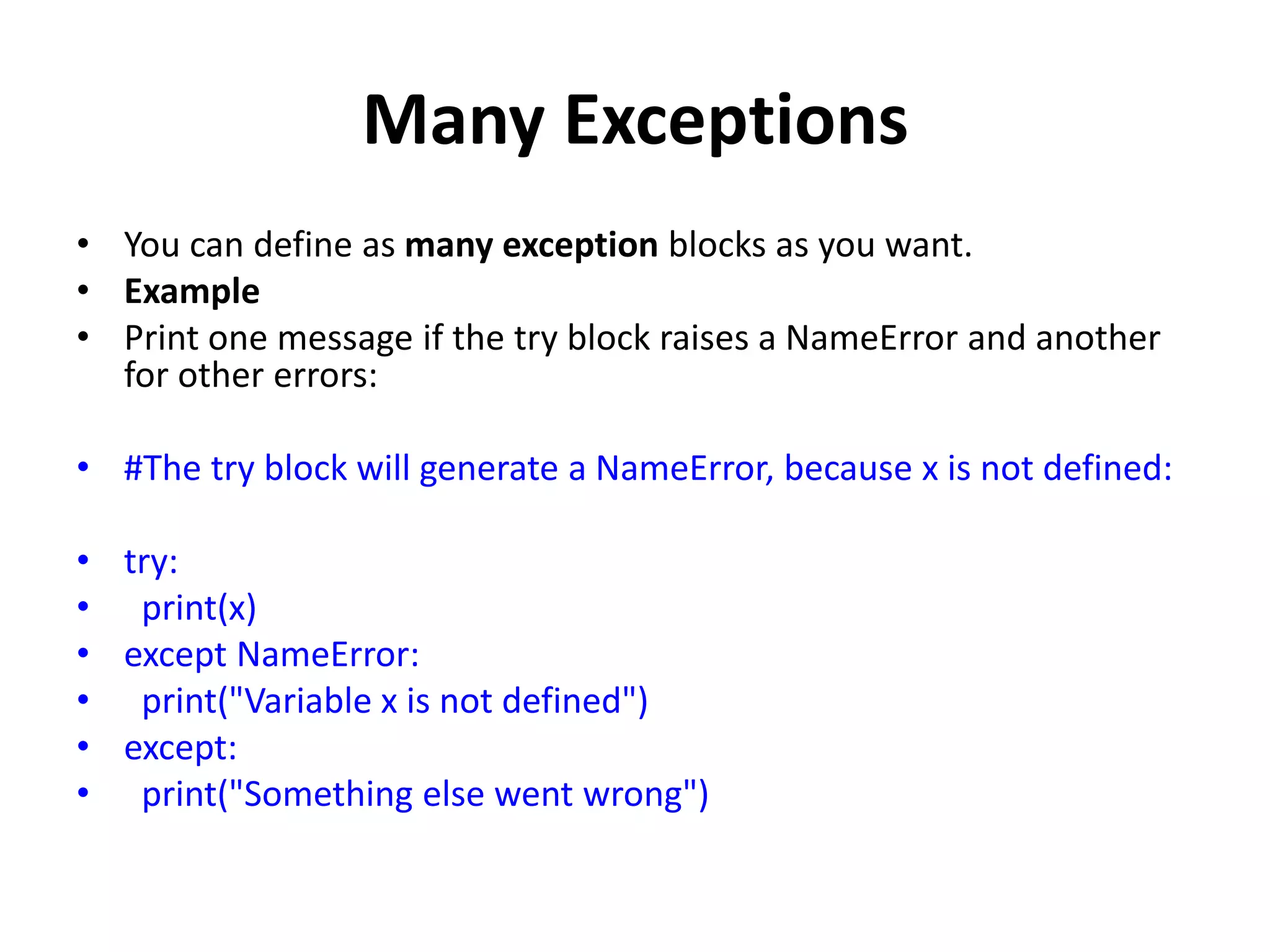

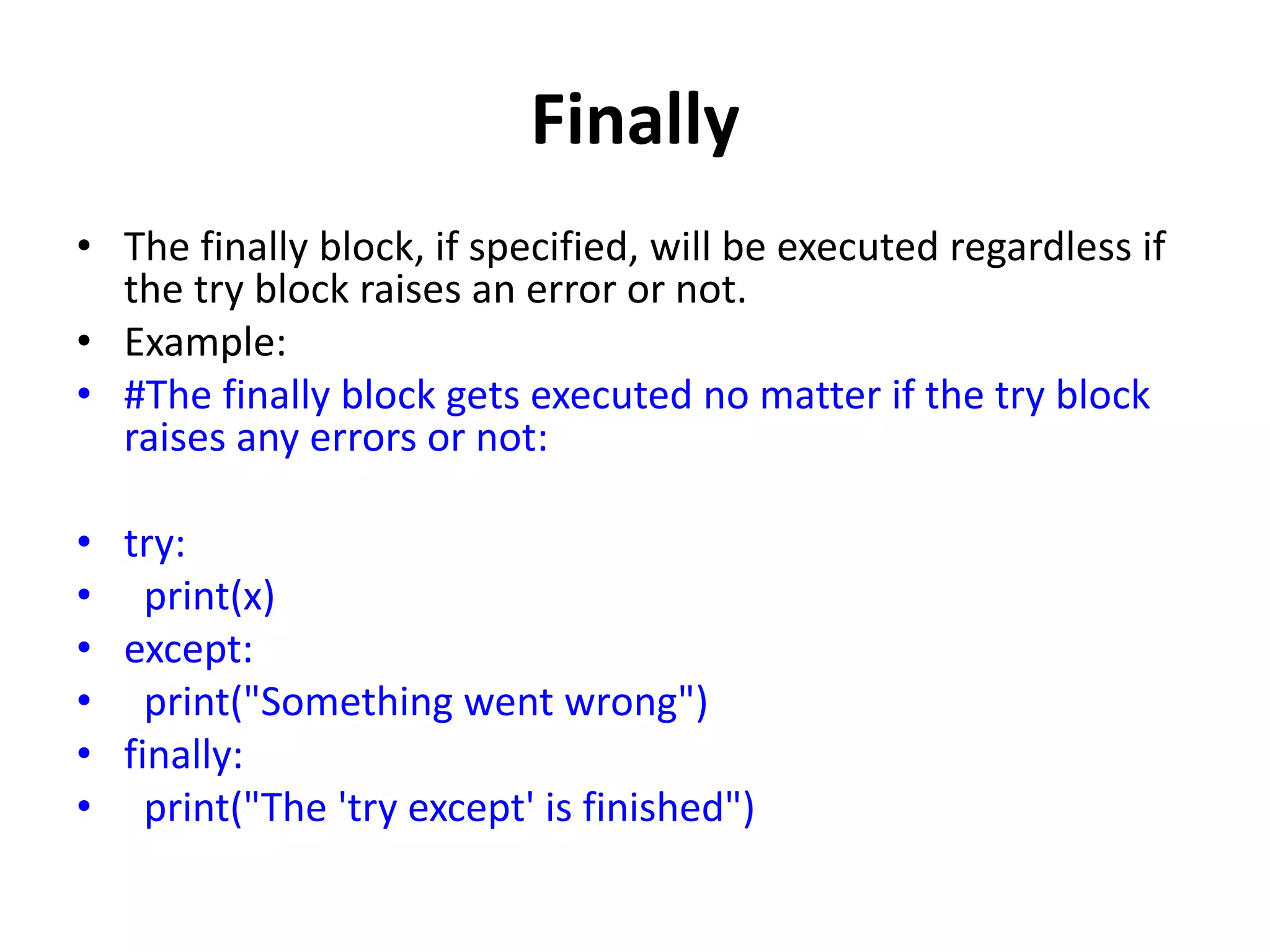
![• Here is an example of an incorrect use: • d={} • try: • x = d[5] • except LookupError: • # WRONG ORDER • print("Lookup error occurred") • except KeyError: • print("Invalid key used")](https://image.slidesharecdn.com/exceptionhandlingandfunctioninpython-210831040407/75/Exception-handling-and-function-in-python-10-2048.jpg)
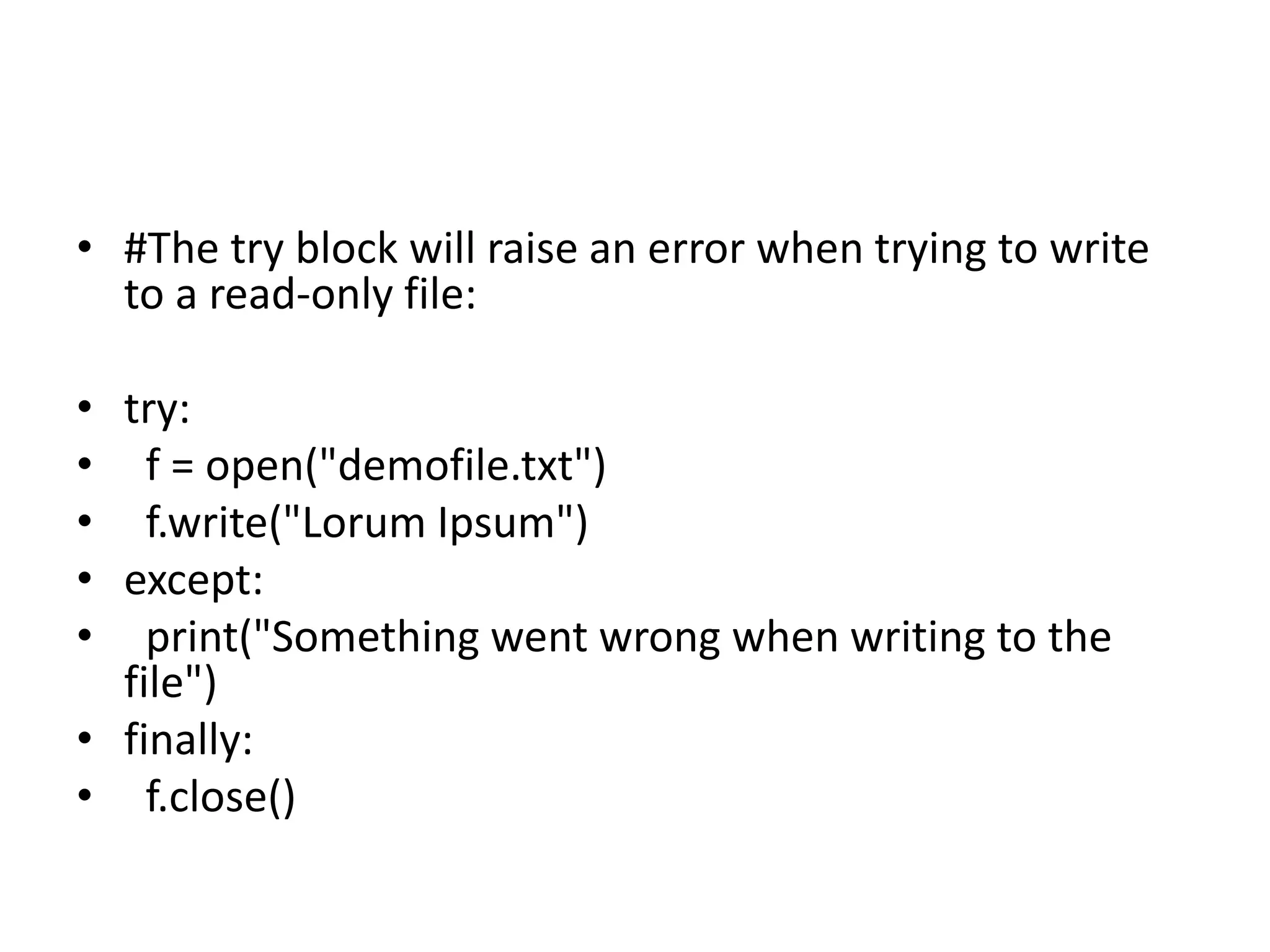

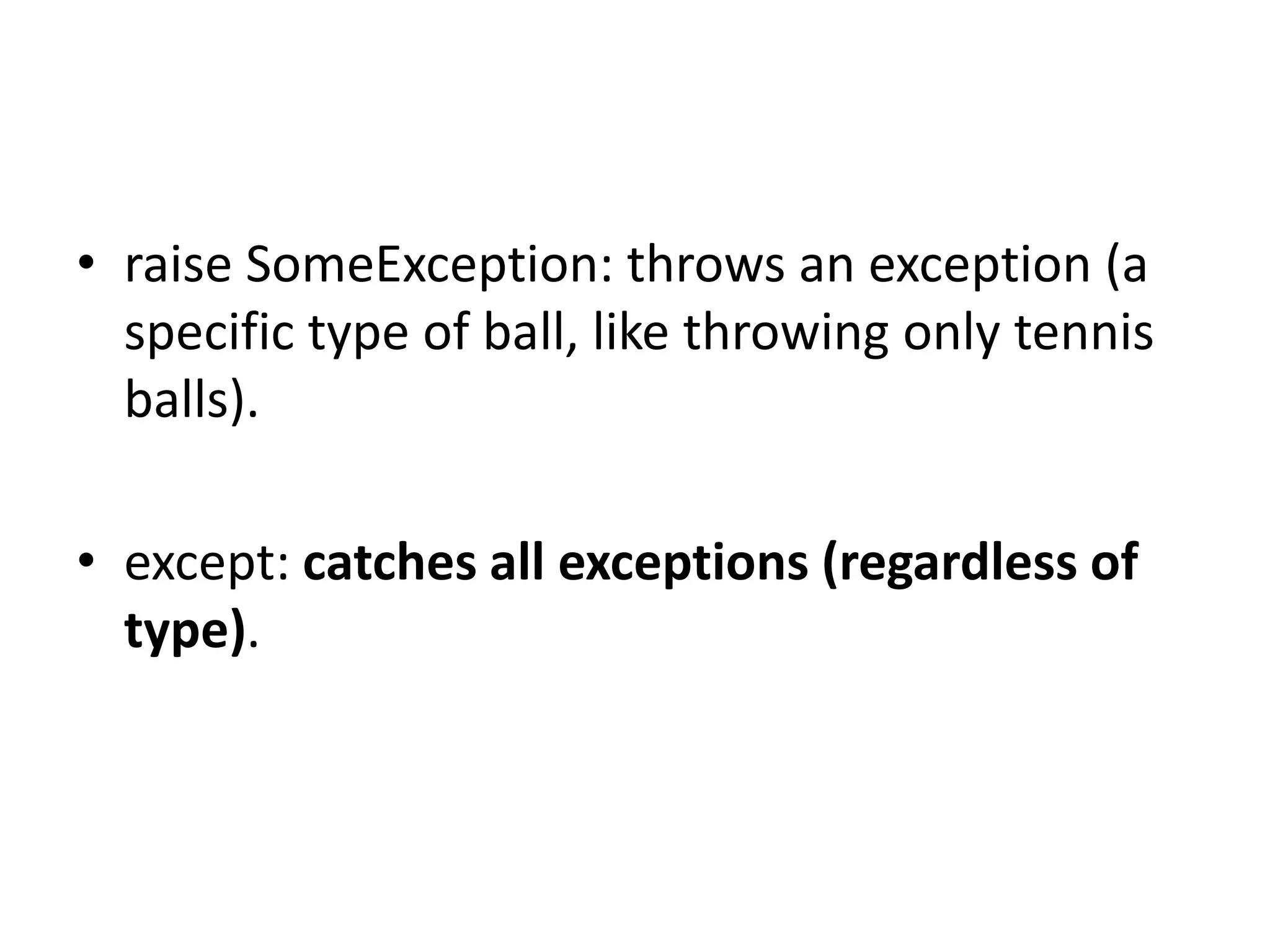
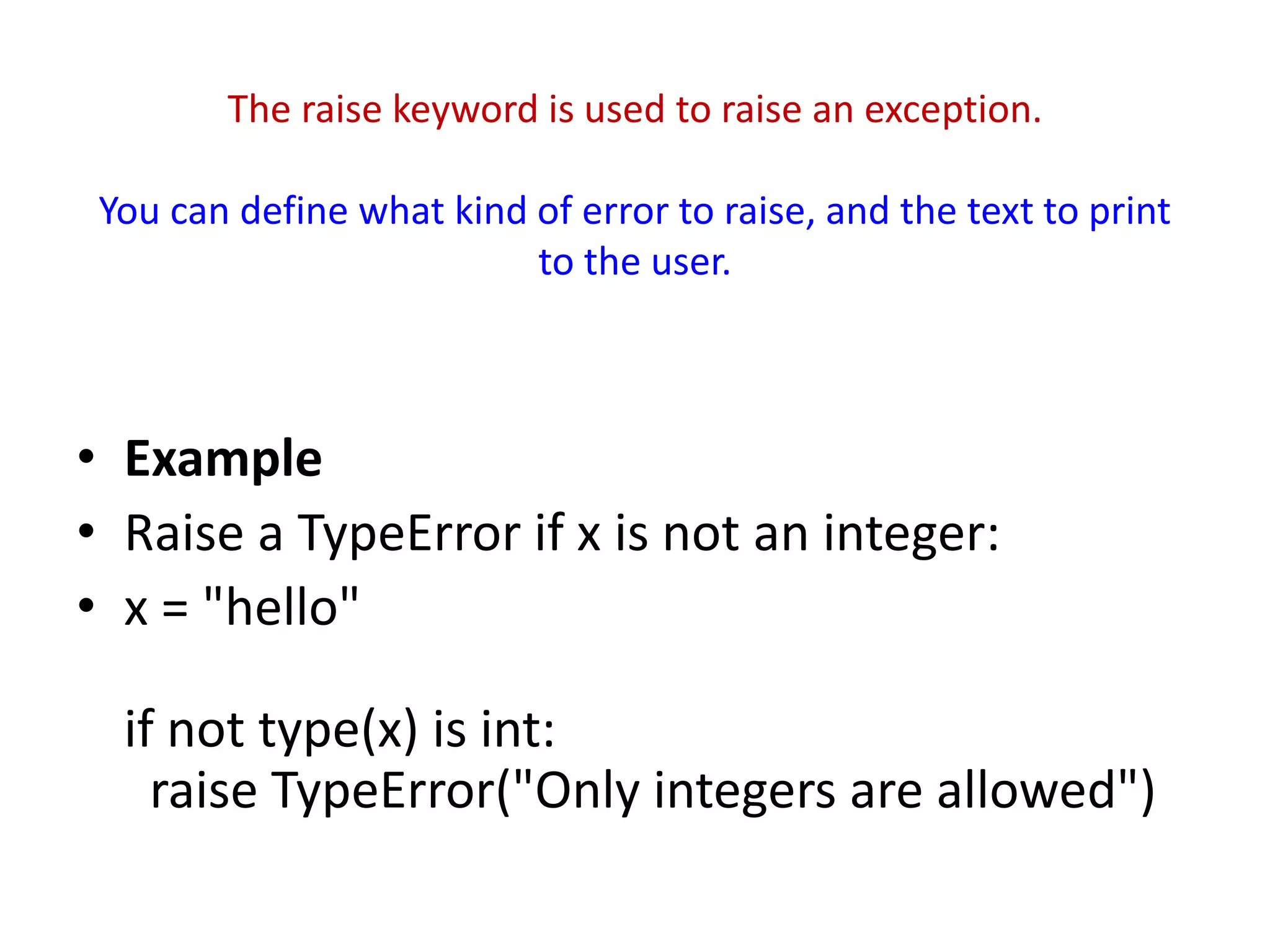
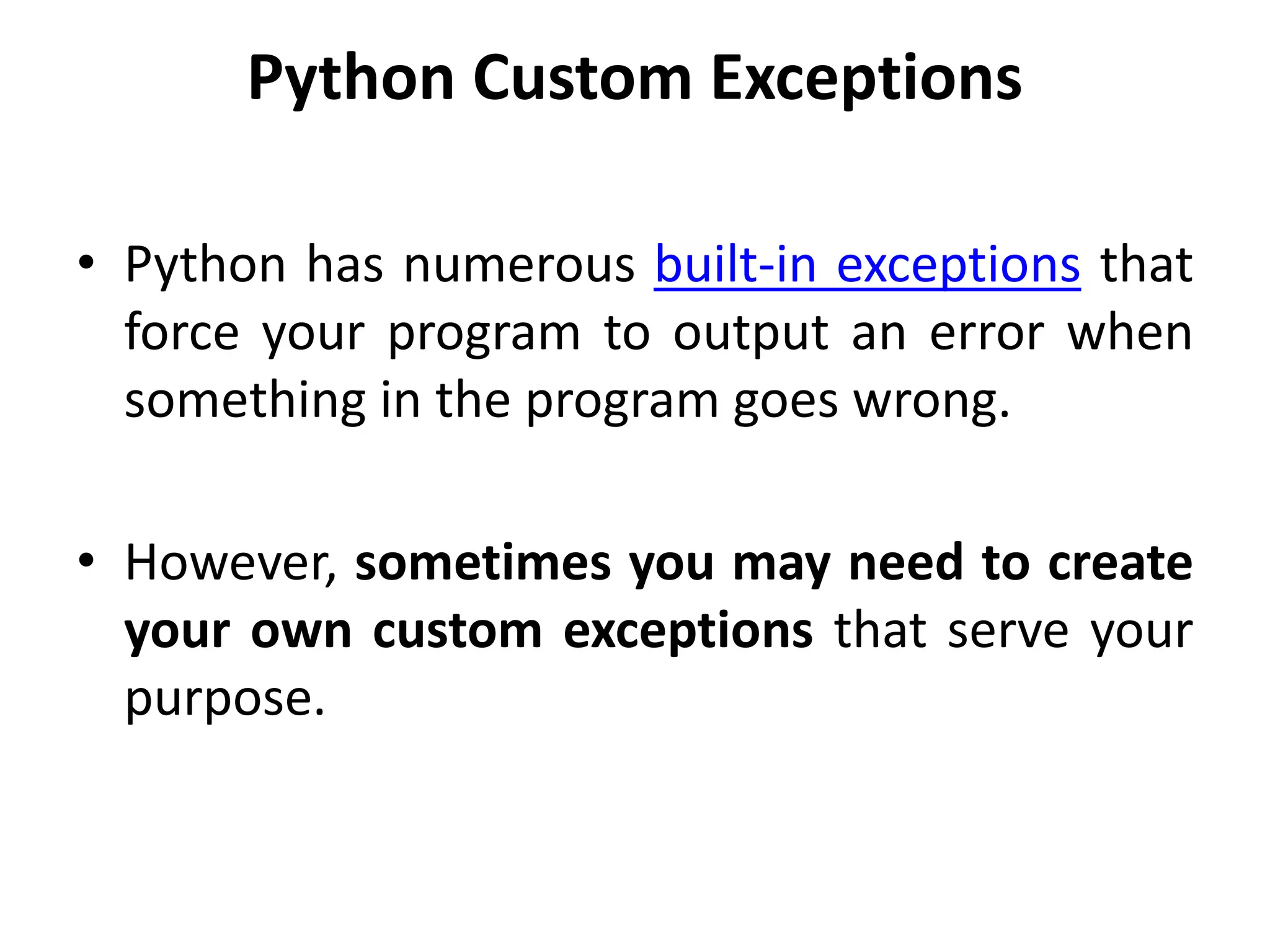
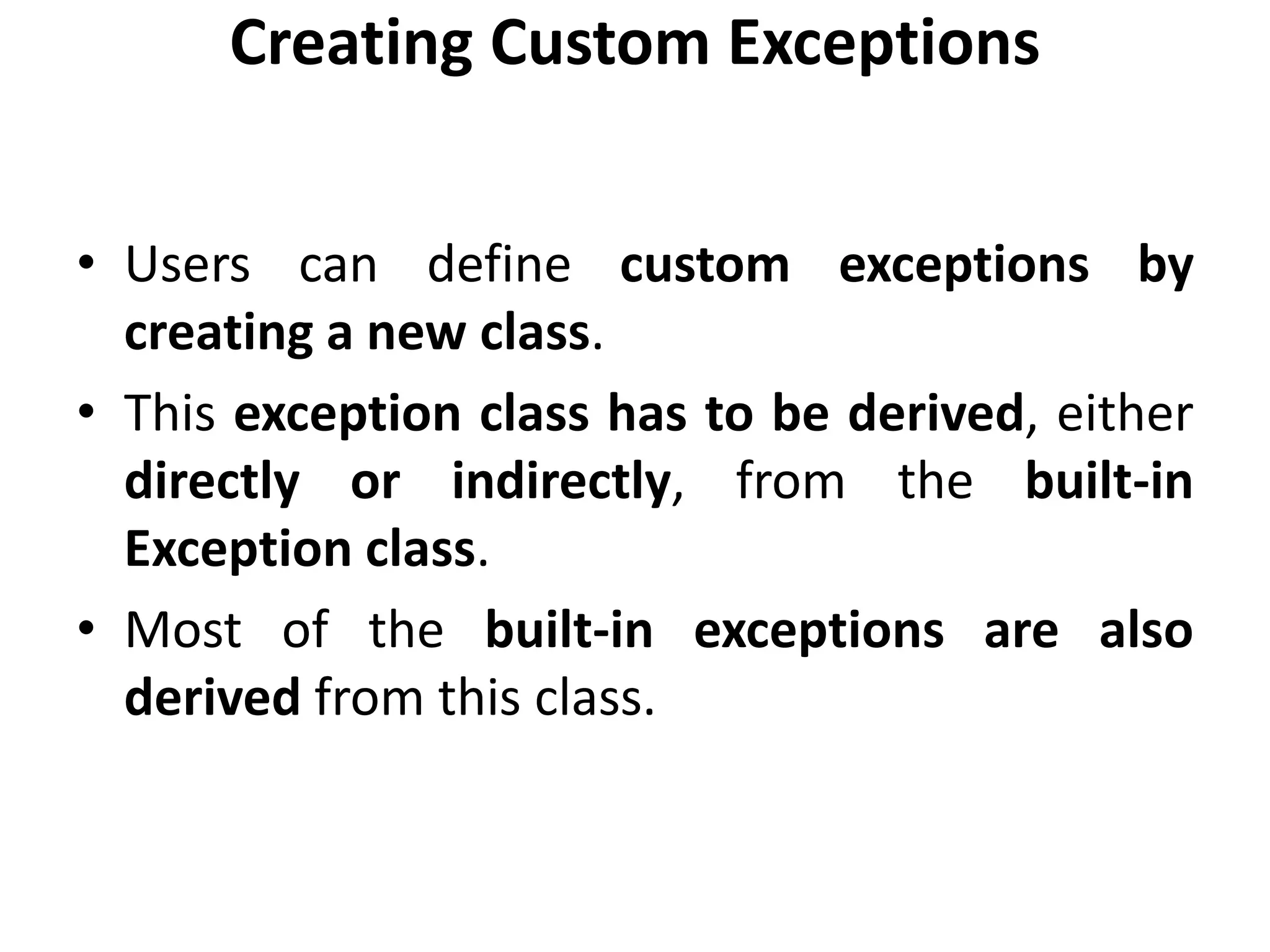
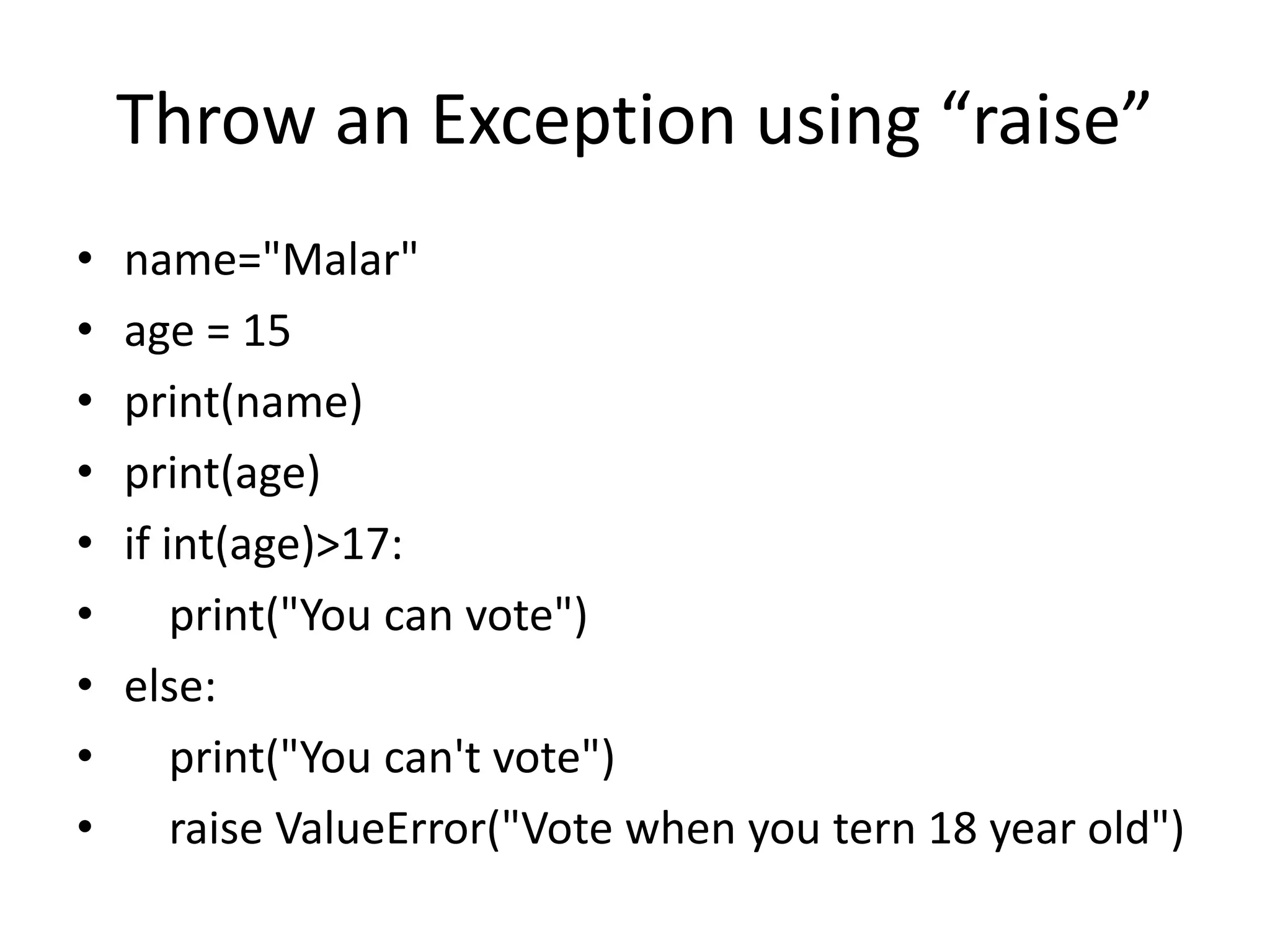
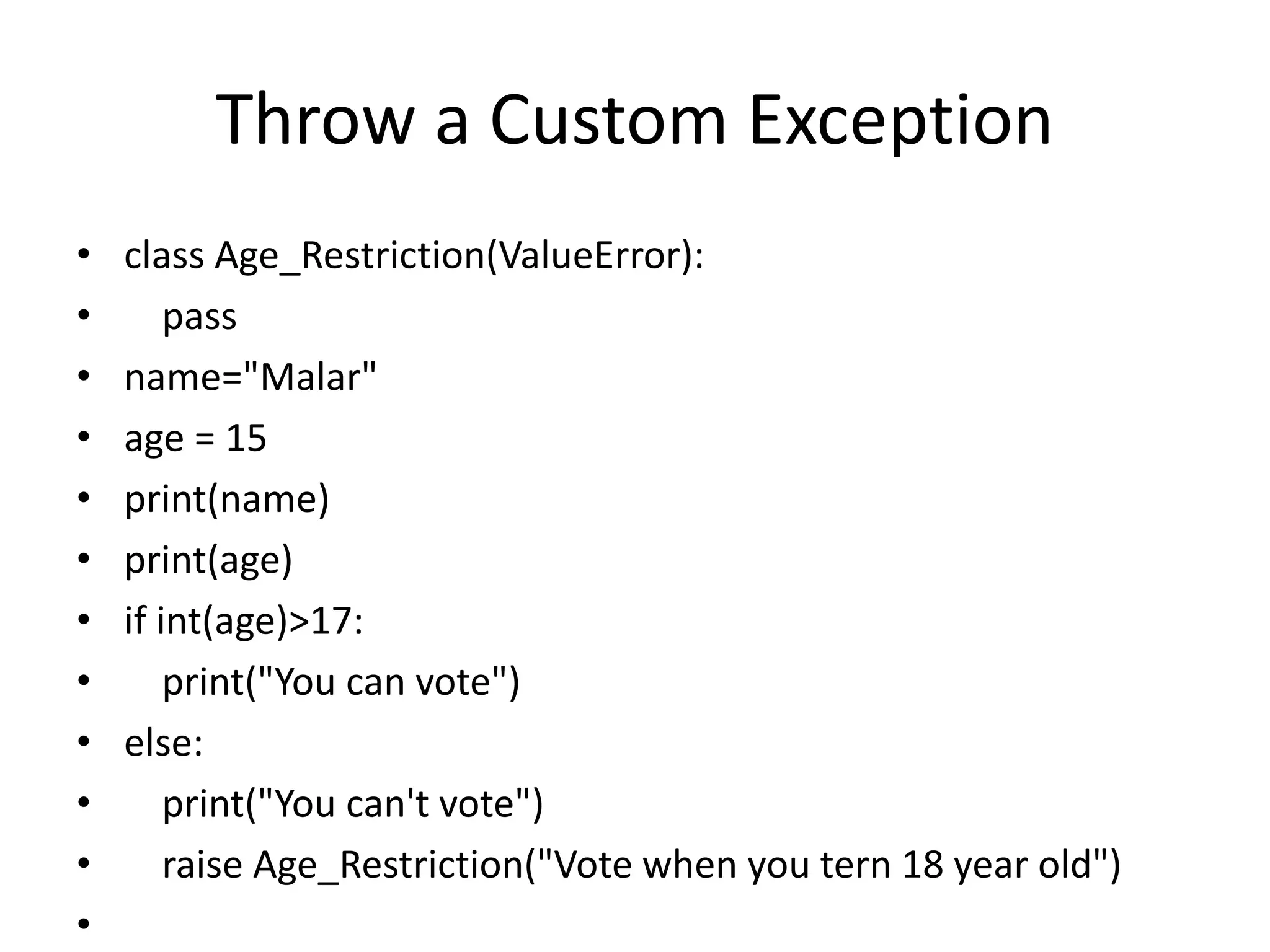
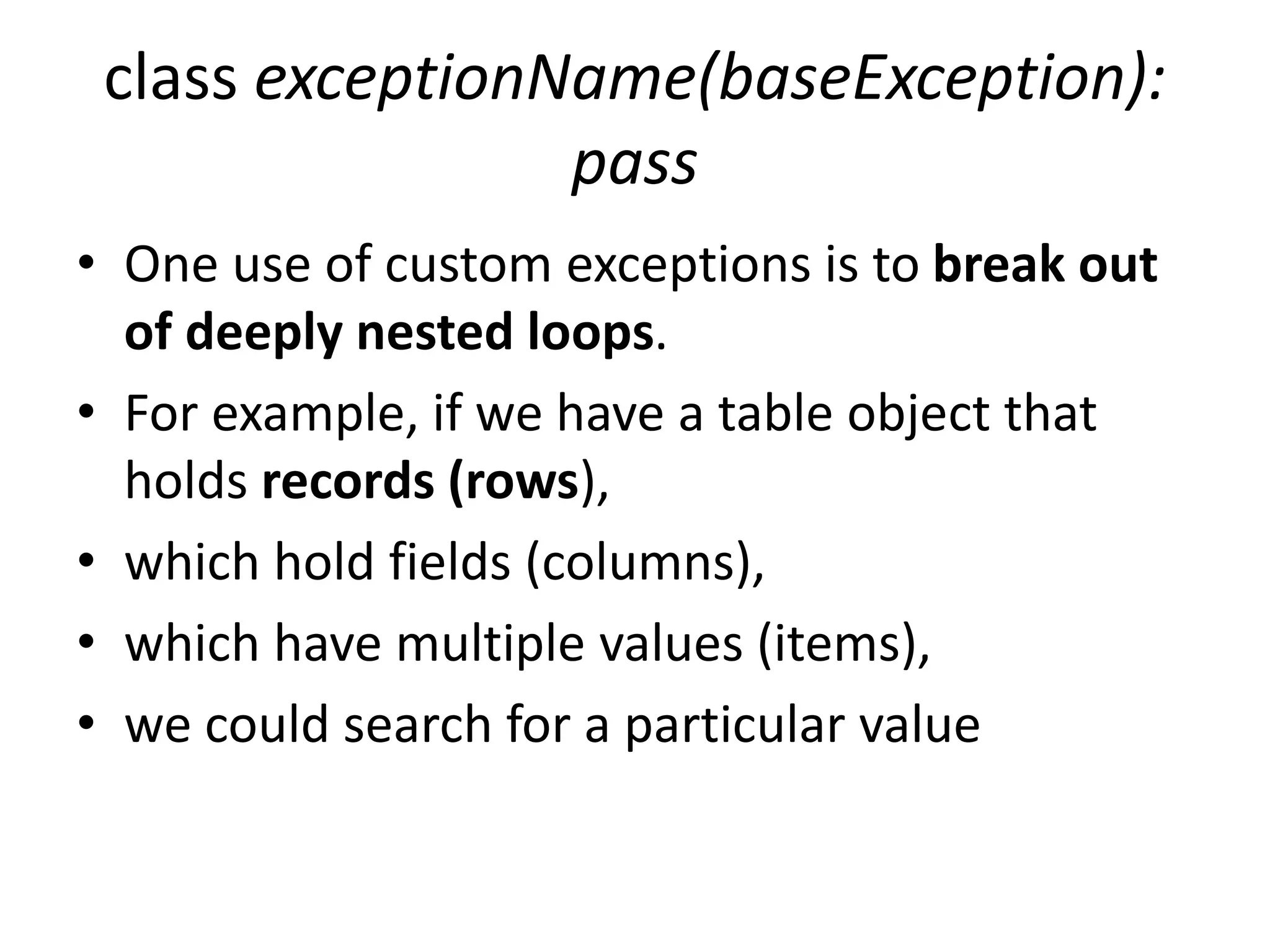

![• from prettytable import PrettyTable list1=[“Anu",”18",“98"] list2=[“Siva",“19",“96"] table=PrettyTable([‘Name',’Age‘,’Mark’]) for x in range(0,3): table.add_row(list1[x],list2[x]) print(table)](https://image.slidesharecdn.com/exceptionhandlingandfunctioninpython-210831040407/75/Exception-handling-and-function-in-python-21-2048.jpg)
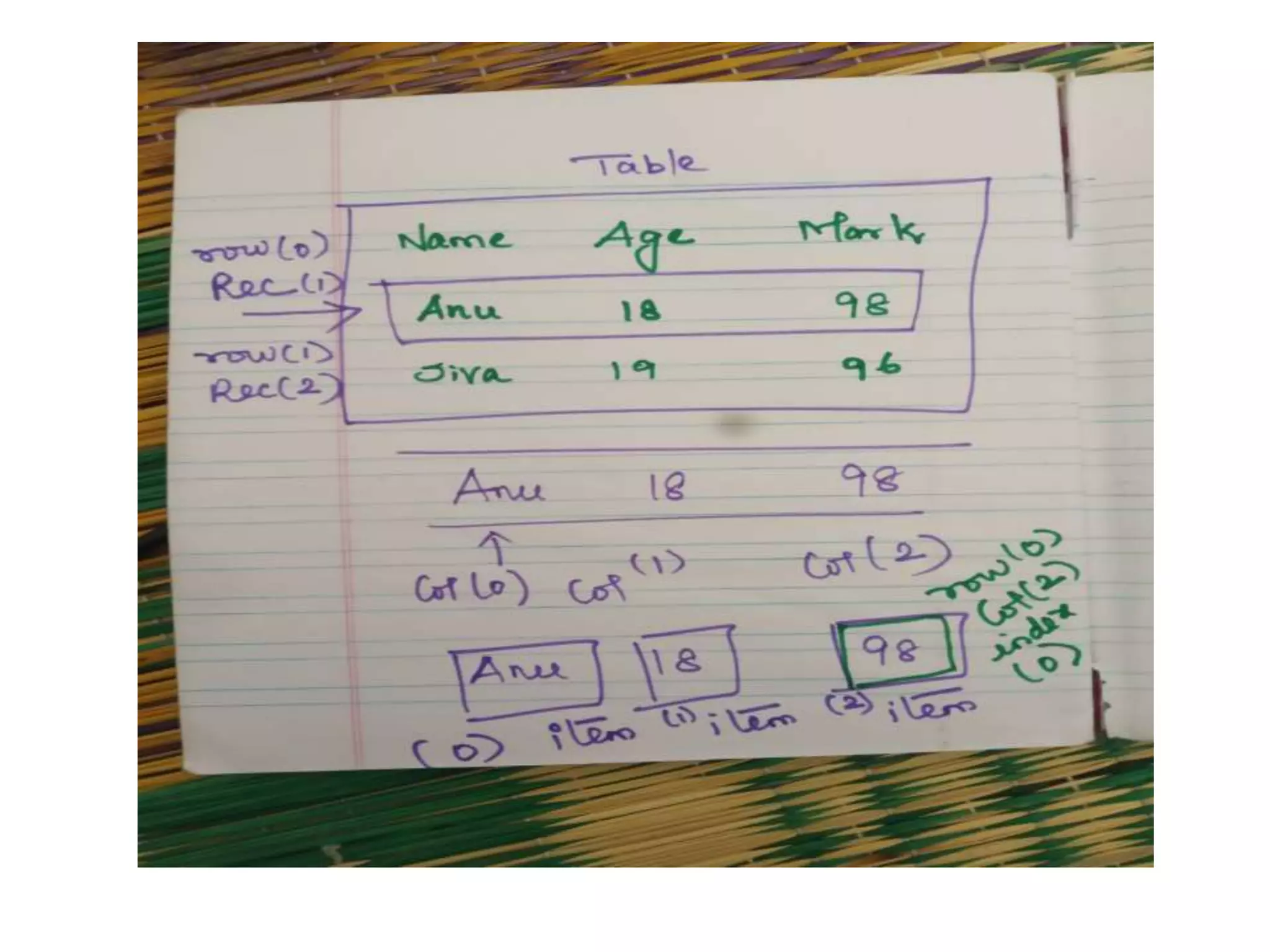
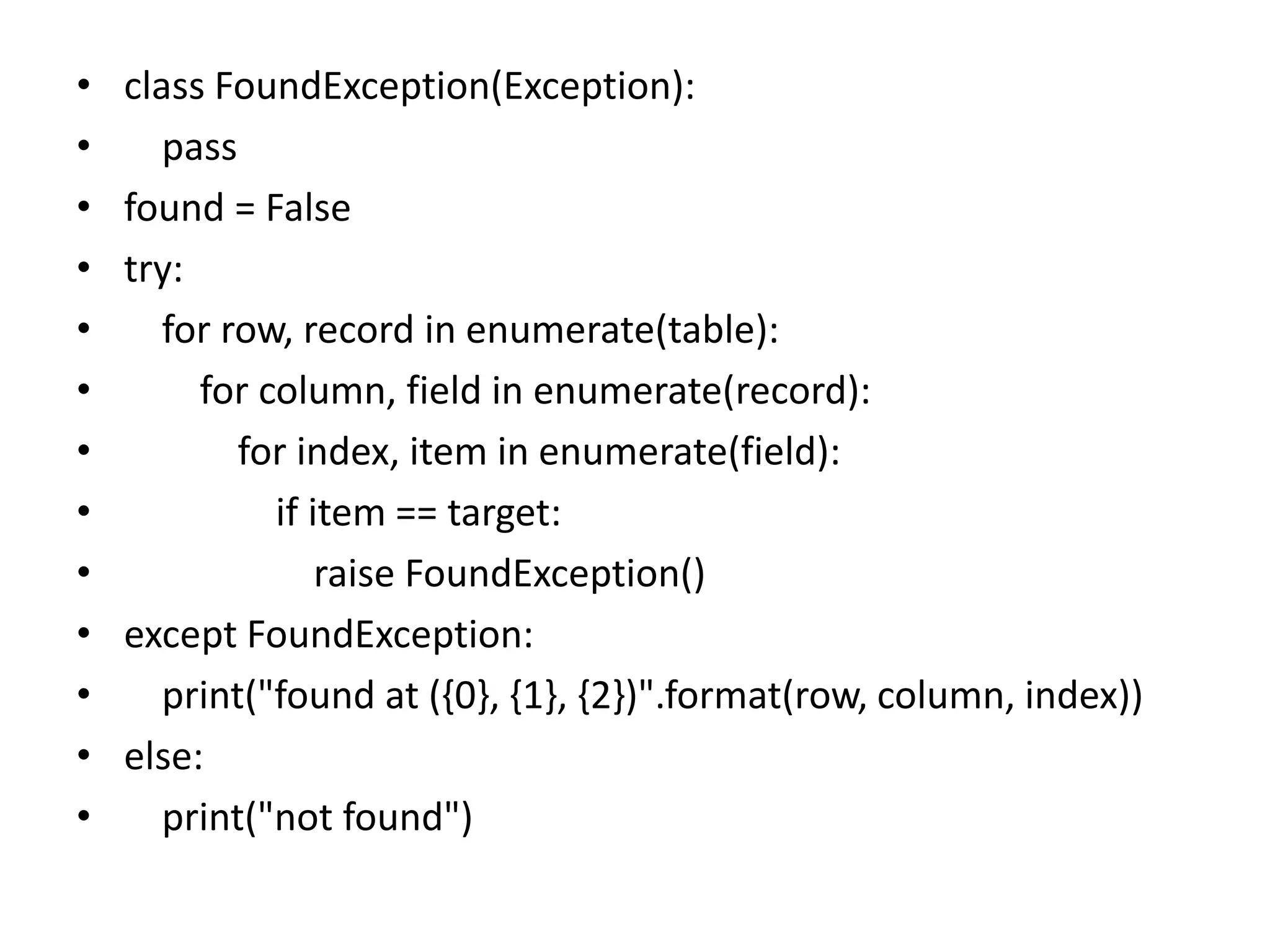
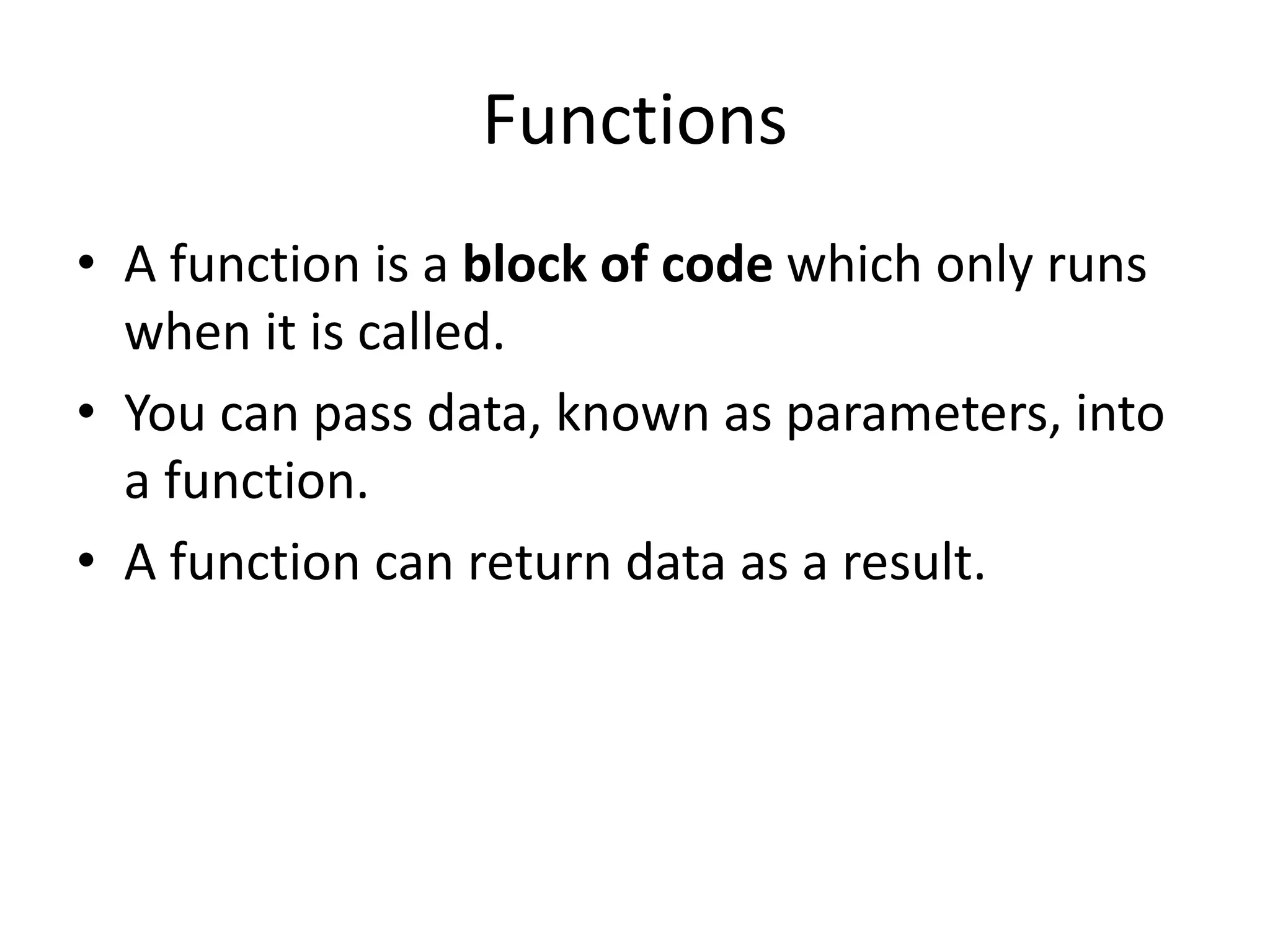
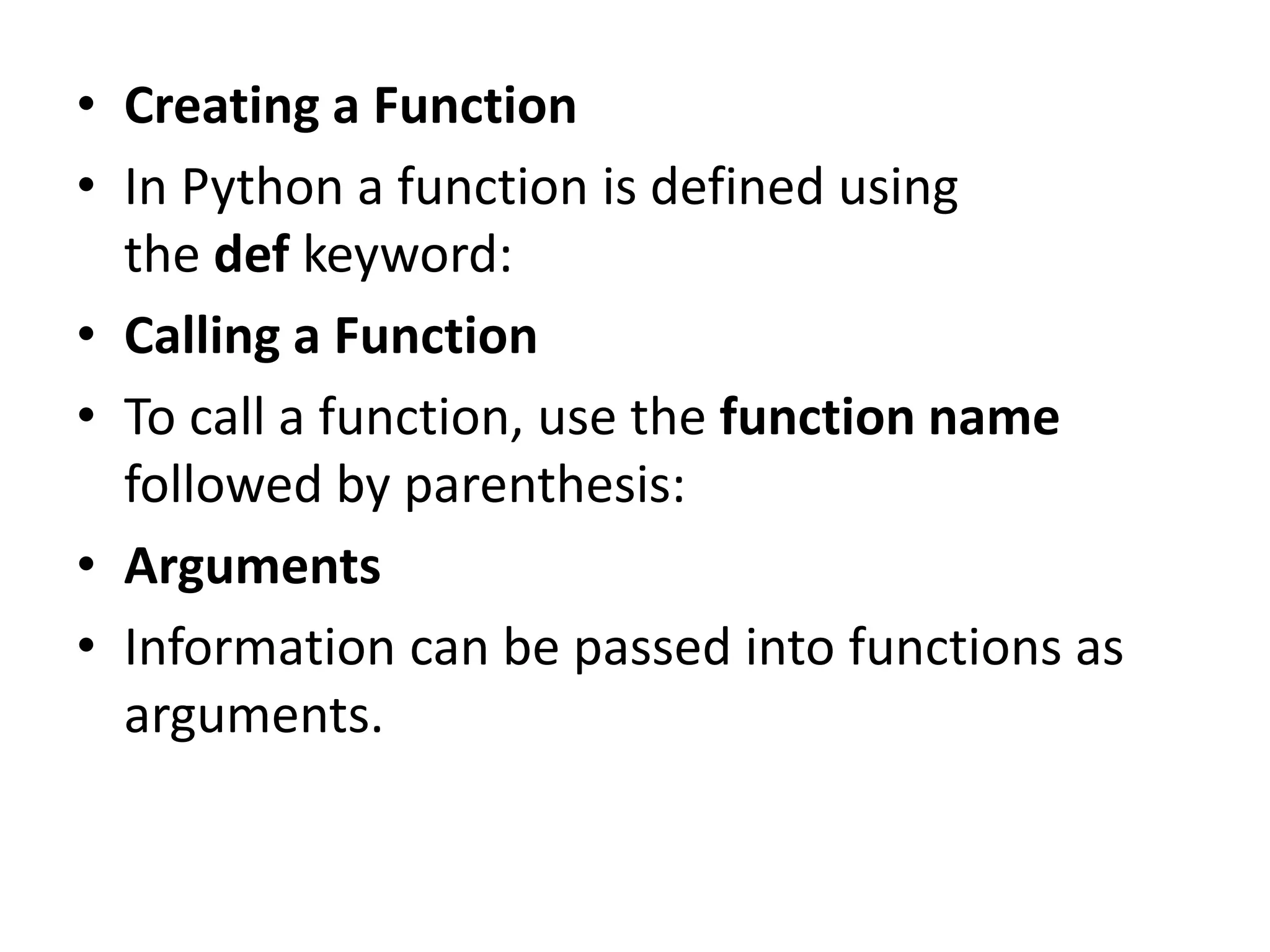
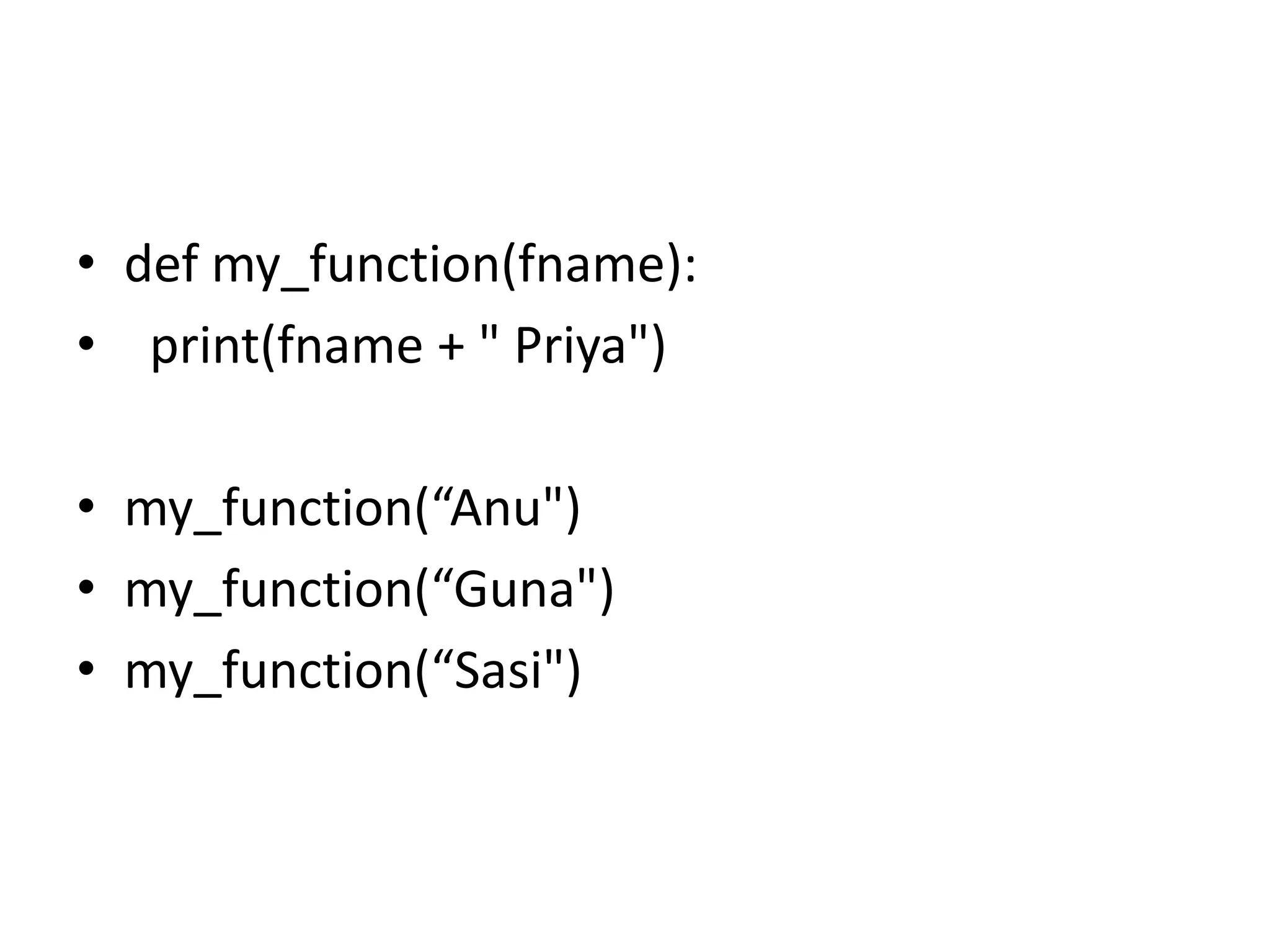
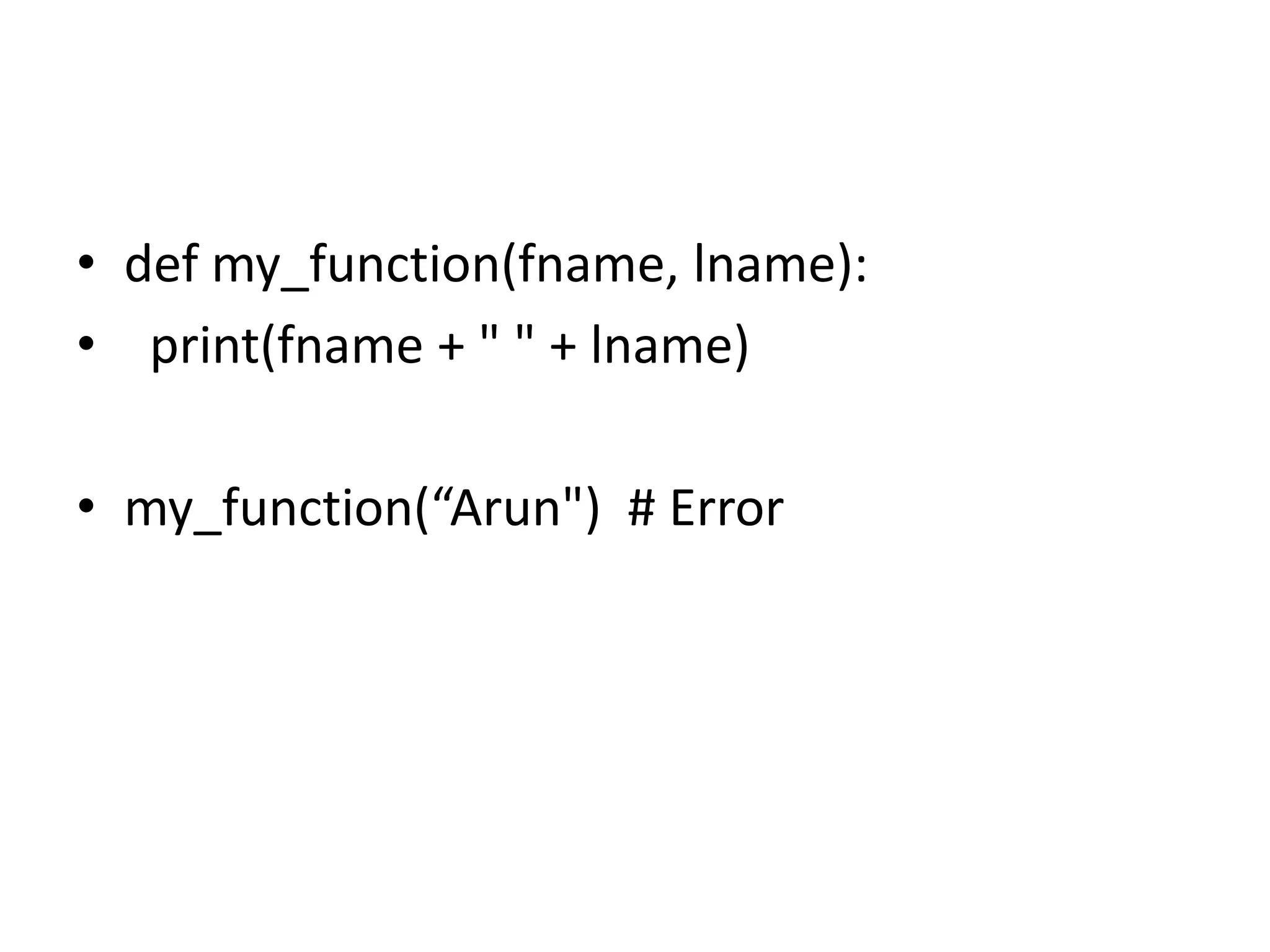
![Arbitrary Arguments, *args • If you do not know how many arguments that will be passed into your function, • add a * before the parameter name in the function definition. • def my_function(*kids): • print("The youngest child is " + kids[2]) • my_function(“Aradhana", “Diya", “Roshan")](https://image.slidesharecdn.com/exceptionhandlingandfunctioninpython-210831040407/75/Exception-handling-and-function-in-python-28-2048.jpg)
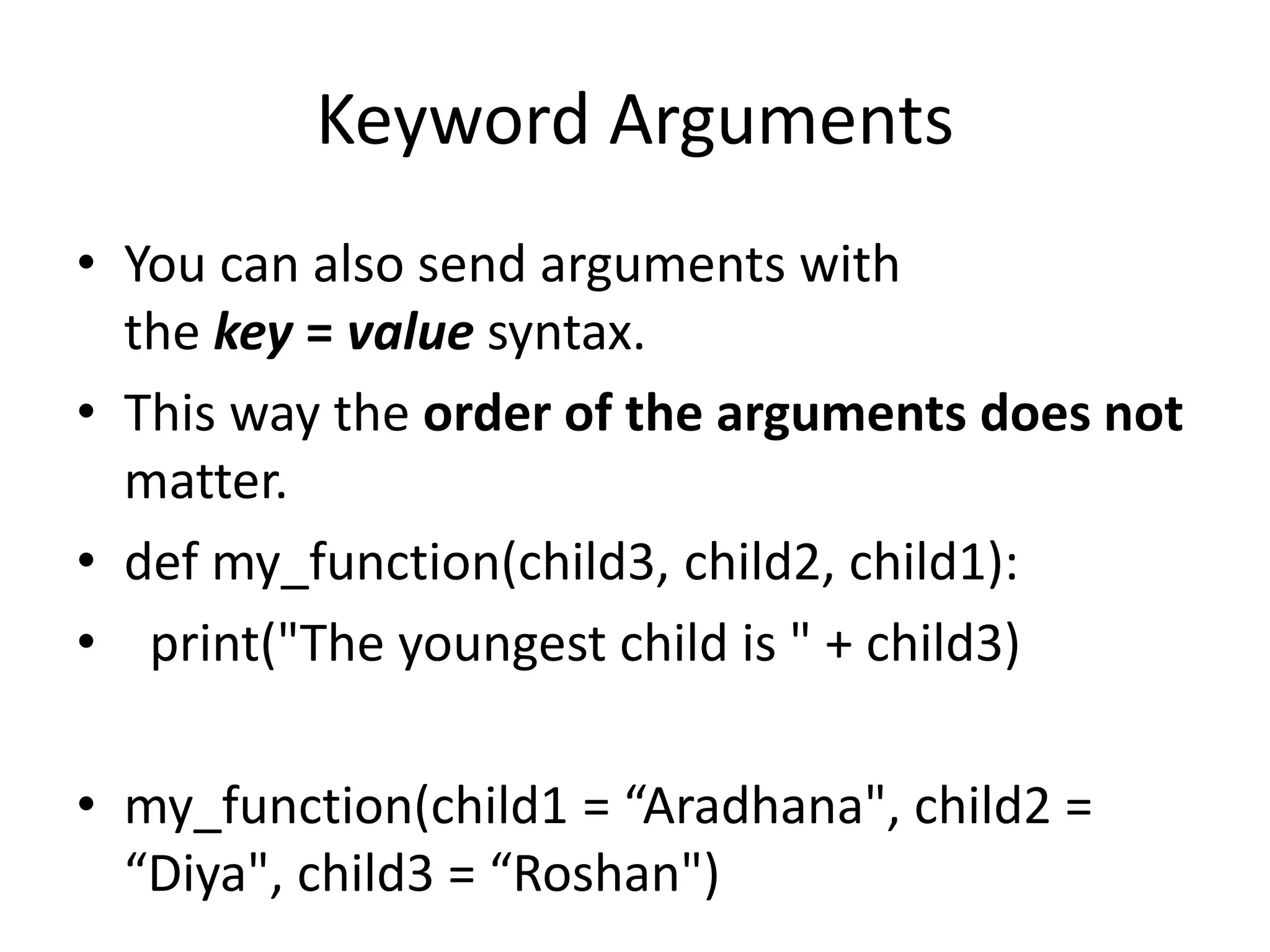
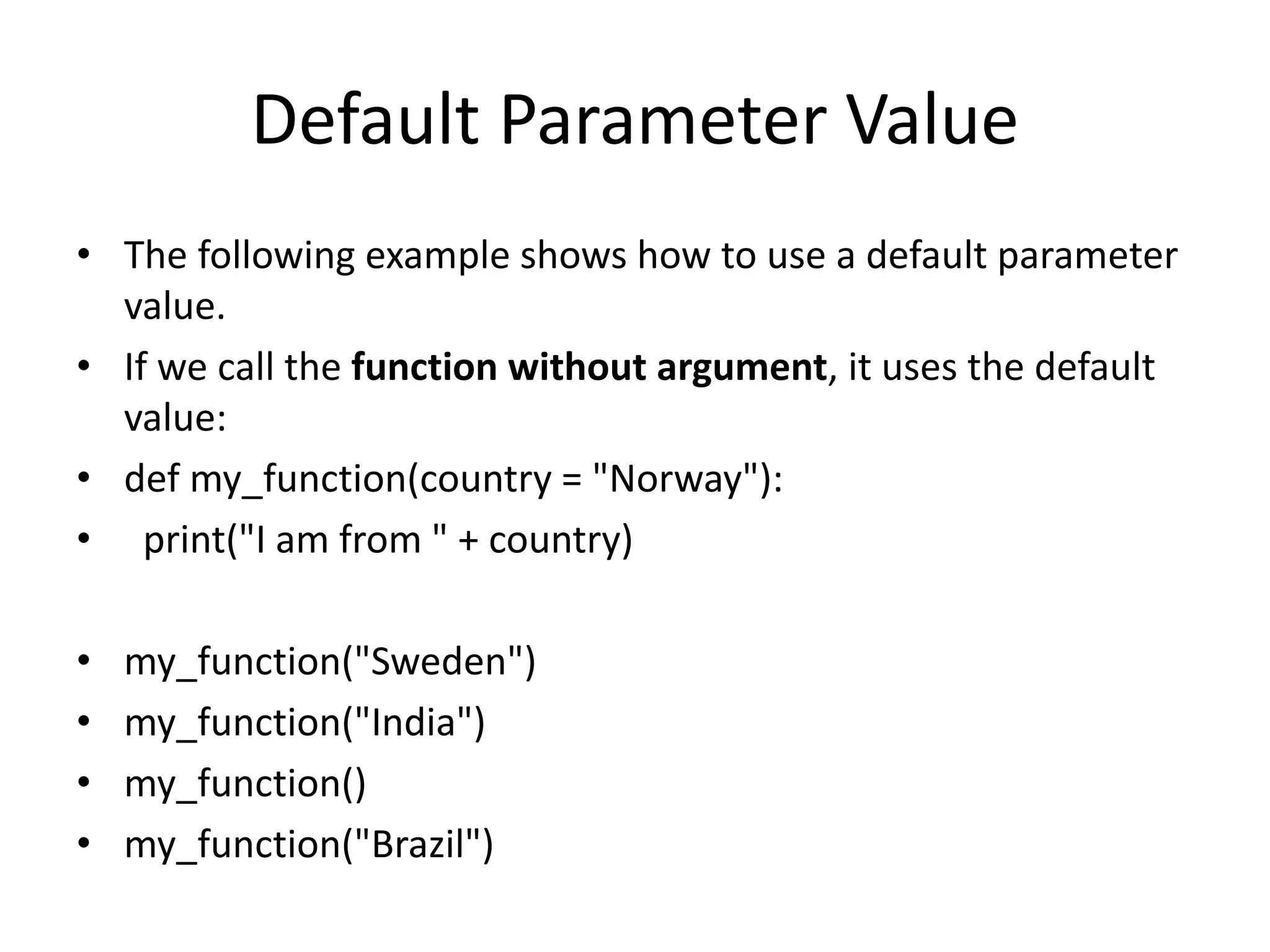
![Passing a List as an Argument • You can send any data types of argument to a function (string, number, list, dictionary etc.), and it will be treated as the same data type inside the function. • def my_function(food): • for x in food: • print(x) • fruits = ["apple", "banana", "cherry"] • my_function(fruits)](https://image.slidesharecdn.com/exceptionhandlingandfunctioninpython-210831040407/75/Exception-handling-and-function-in-python-31-2048.jpg)
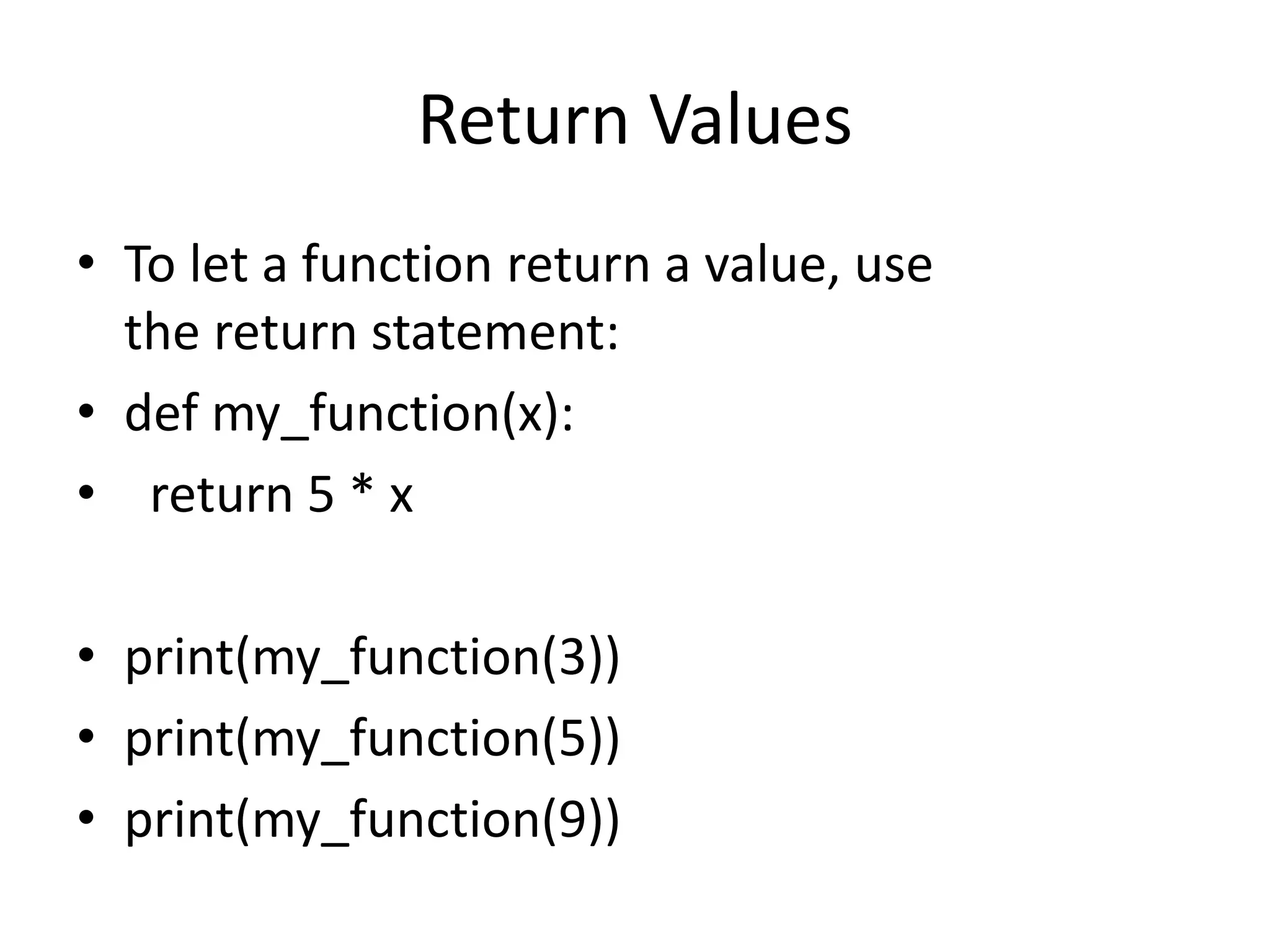
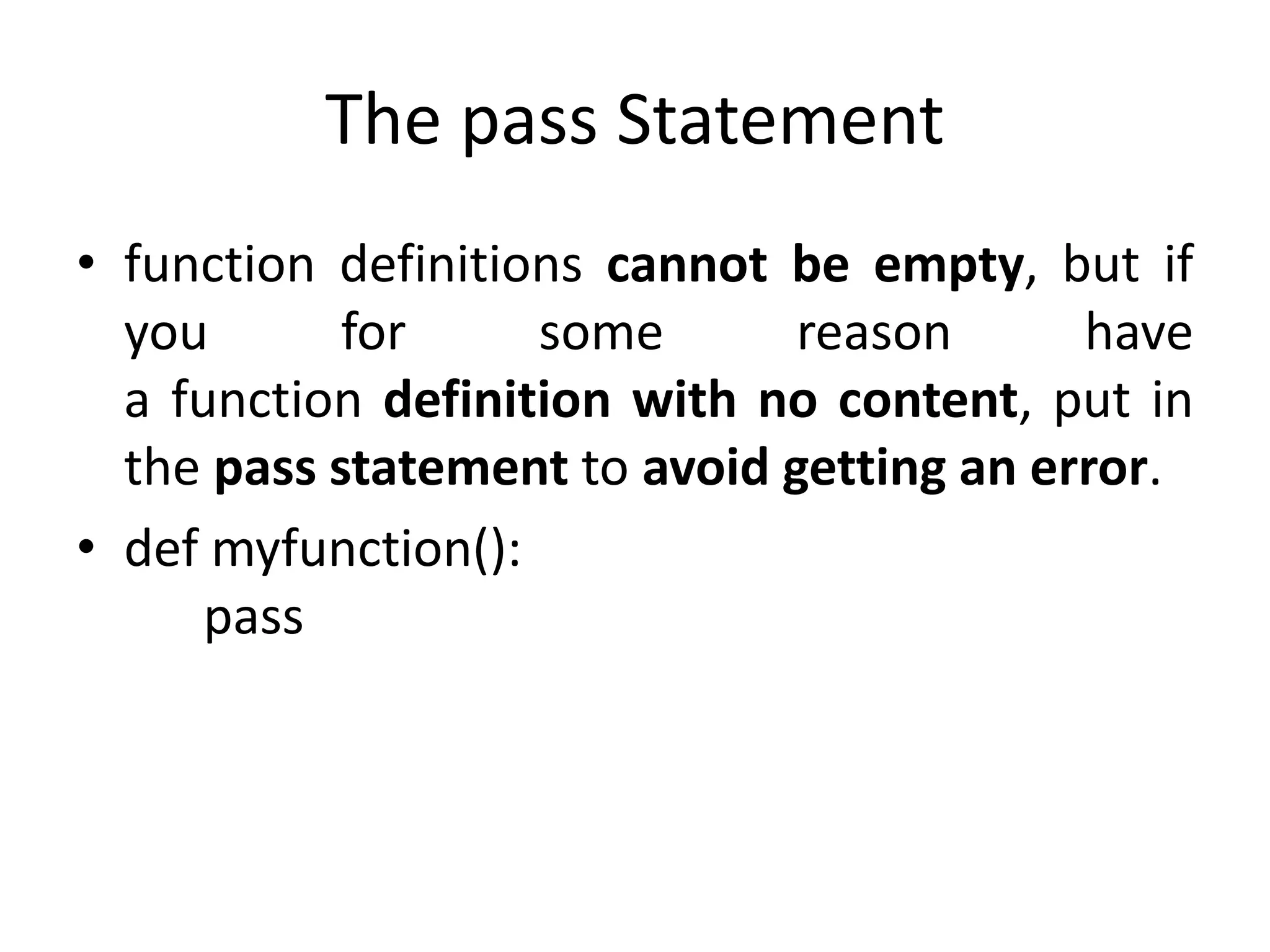
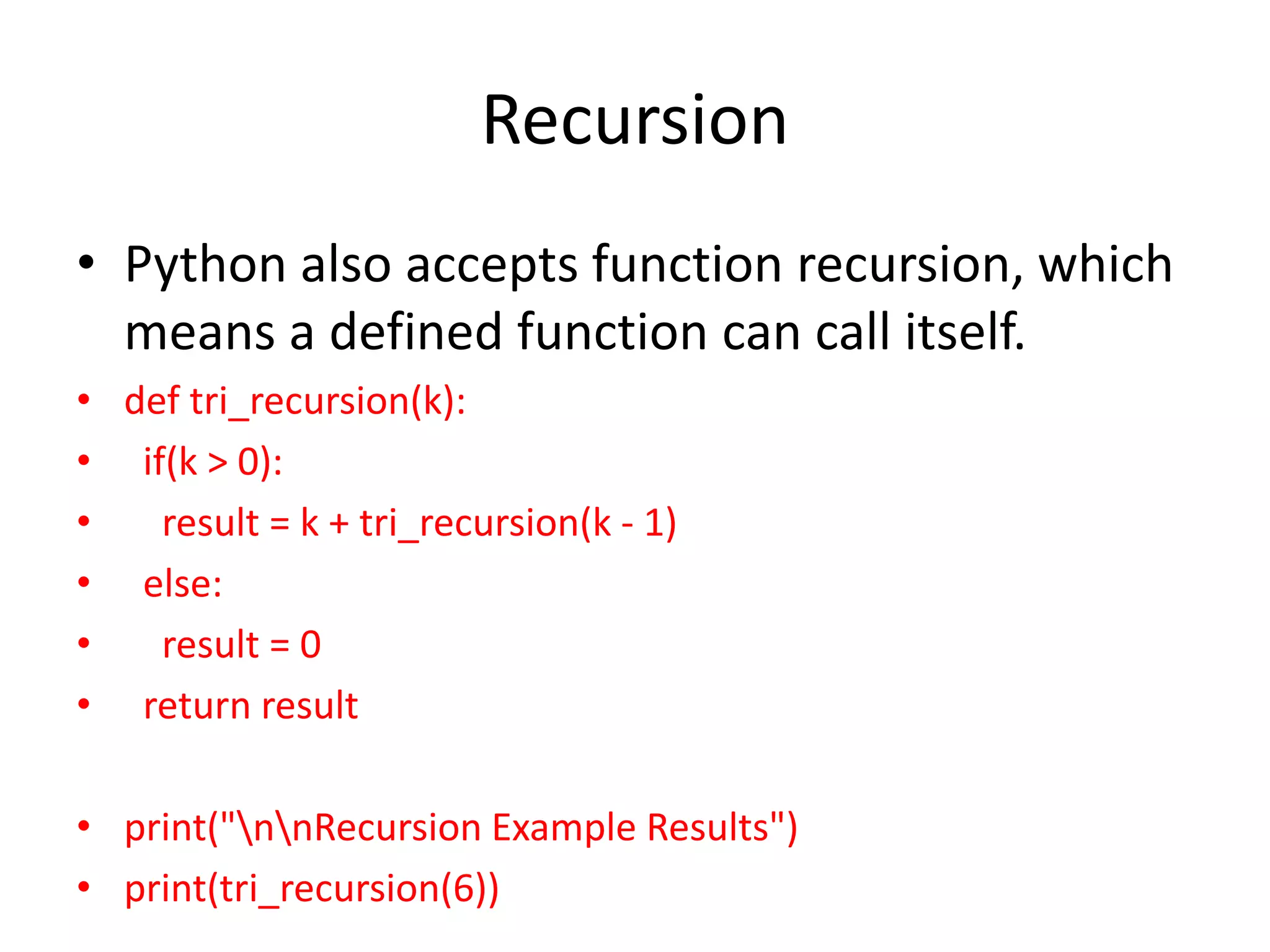
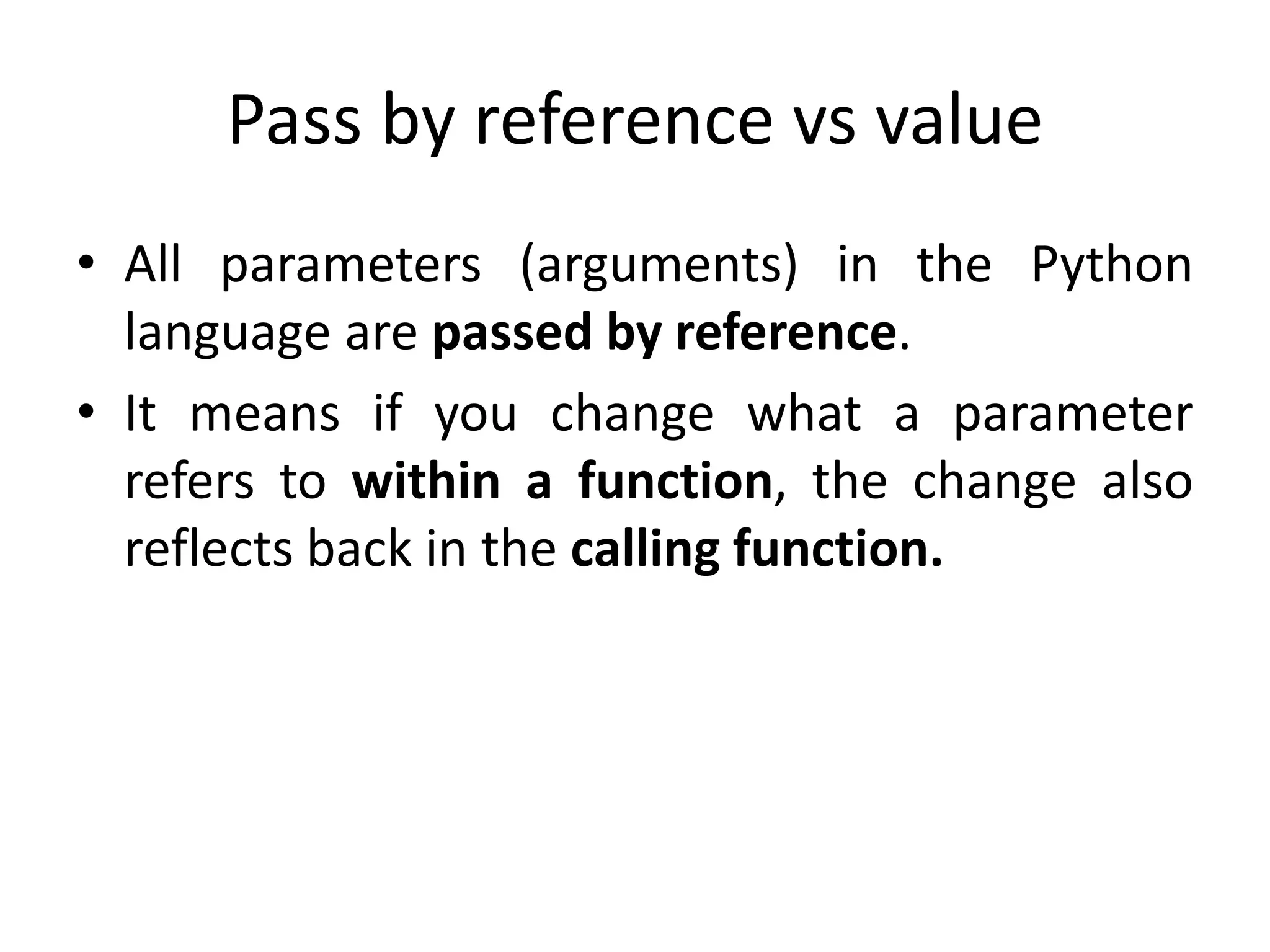
![• def changeme( mylist ): • #"This changes a passed list into this function" • mylist.append([1,2,3,4]) • print("Values inside the function: ", mylist) • return • # Now you can call changeme function • mylist = [10,20,30] • changeme( mylist ) • print("Values outside the function: ", mylist)](https://image.slidesharecdn.com/exceptionhandlingandfunctioninpython-210831040407/75/Exception-handling-and-function-in-python-36-2048.jpg)
![• # Function definition is here • def changeme( mylist ): • mylist = [1,2,3,4]; # This would assign new reference in mylist • print "Values inside the function: ", mylist • # Now you can call changeme function • mylist = [10,20,30]; • changeme( mylist ); • print "Values outside the function: ", mylist](https://image.slidesharecdn.com/exceptionhandlingandfunctioninpython-210831040407/75/Exception-handling-and-function-in-python-37-2048.jpg)

